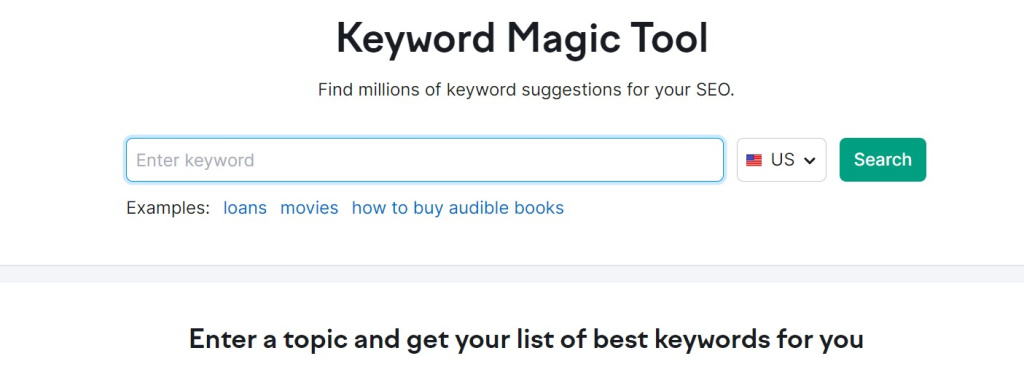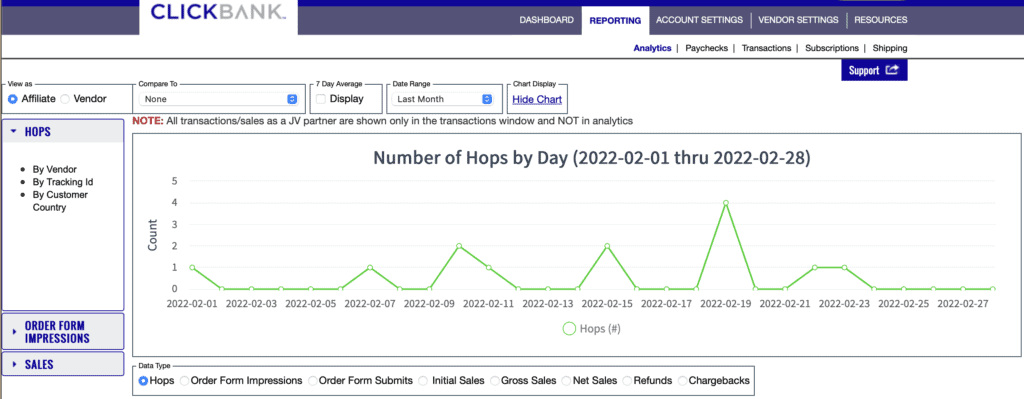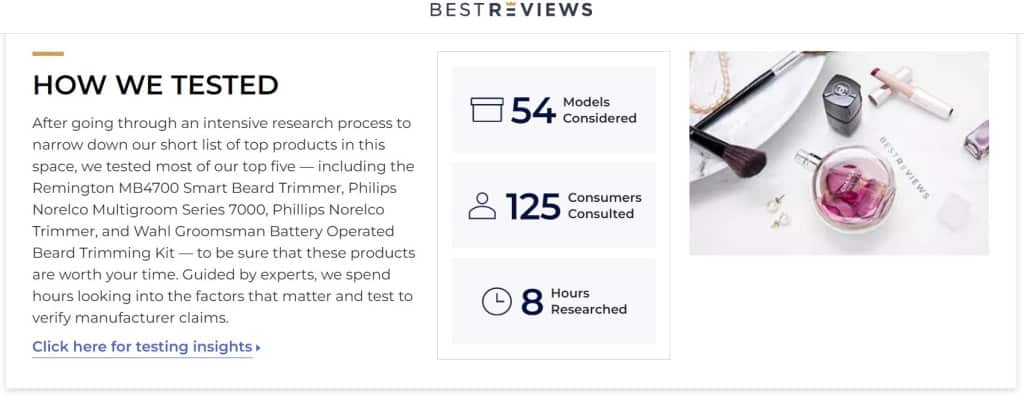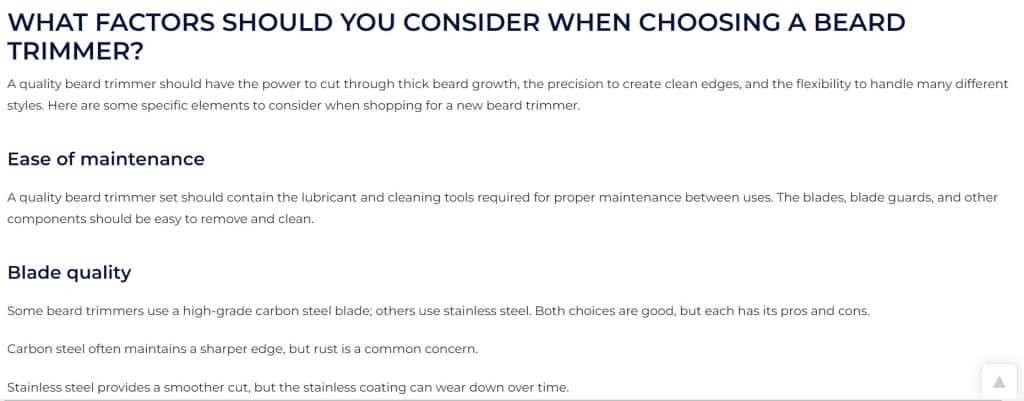Free
How to Write a Product Review Thats Makes Sales in 2022
From our friends at Clickbank.com
There are many types of affiliates out there, from paid media buyers to influencers. But lately, we have been focused on how content publishers can generate affiliate sales through organic content on their own affiliate website, YouTube channel, or podcast.
Now that we’ve learned about affiliate marketing keyword research, let’s turn our attention to the most important part of publishing successful affiliate content: writing product reviews.
Want to know how to write a good product review that will make people want to click on your affiliate links? Keep reading!
Why Should You Write Product Reviews
The internet has changed the way consumers make decisions about buying products.
For example, one consumer review survey from 2022 found that:
- 99% of consumers have used the internet to find information about a local business in the last year.
- 78% of consumers use the internet to find information about local businesses more than once a week (up from 69% in 2020).
By publishing helpful and informative product reviews that are relevant to your niche, you deliver value to your audience. And if done correctly, you can rank well in Google’s search results, leading to more traffic and an increase in affiliate commissions!
Why People Read Product Reviews
Before we talk about how to write a good product review, we have to consider WHY people would bother reading one (and clicking on your affiliate tracking link), instead of heading straight to a product page to buy something.
Here’s the answer:
What consumers want most is an unbiased viewpoint.
Unlike what many might believe, the decision to buy a product is an emotional decision, not a logical one. They base it on either needing or wanting something to solve a problem. But once they decide they want or need something, they use logic to justify their emotional decision.
Product features play a role, but the benefits of owning a product are what trigger the emotional buying response.
From early childhood, we are asked by our parents and teachers WHY we do what we do.
Examples include:
- Why did you do it?
- Why do you want it?
As we grow older, we subconsciously look for reasons to justify our decisions.
Most consumers know they cannot blindly trust the sales copy on a website. That is why they read product reviews – they want an objective and comprehensive analysis that will confirm whether or not they’re making the right decision.
Product reviews help consumers justify, at least in their own mind, any purchase decisions they make.
You have probably heard someone say (or said it yourself): “It has great reviews.”
Whether you’re buying movie tickets, shopping for a new car, or ordering a product online, what other people think matters! And if you make the wrong decision, you can always point the blame, at least partially, elsewhere.
It may not be a flattering take on human nature, but if you as an affiliate and content publisher understand this about your audience, you can give them what they want!
NOTE: Most consumers can smell B.S. a mile away and will click on anything BUT your affiliate link if they think you’re not being sincere with them!
7 Steps to a Successful Product Review
With all that in mind, it’s time to actually write a product review that will convert readers into customers.
Here are 7 steps to a successful product review.
Step 1: Pick the Affiliate Product or Products to Promote
Before you can write a review, you need to know who you’re talking to and determine what value you can add to their buyer’s journey or decision-making process. Check out a few tips on choosing thing right products to promote!
A) Choose a product relevant to your niche and your audience’s needs.
Many affiliates mistakenly litter their blog with affiliate links (including banners) that are not relevant to their niche or blog post topic. It can distract visitors, lead to a poor user experience and damage your credibility.
Only promote products that are 100% relevant to your niche. And limit the product(s) you are promoting on a blog post to ones relevant to the topic of that post.
Google says the following about affiliate programs:
“When selecting an affiliate program, choose a product category appropriate for your intended audience. The more targeted the affiliate program is to your site’s content, the more value it will add and the more likely you will be to rank better in Google search results and make money from the program. For example, a well-maintained site about hiking in the Alps could consider an affiliate partnership with a supplier who sells hiking books rather than office supplies.”
B) Choose a product that converts well.
Not all products in your niche that you can promote as an affiliate are worth promoting. If a product isn’t selling well, it’s unlikely your product review would change anything. And promoting a lemon might damage your credibility and alienate your audience.
By choosing a product that converts well, I am not suggesting you always pick the best-selling products in your niche. Competing with many other affiliates for a slice of the pie can be difficult, especially if your blog or website is relatively new.
ClickBank has a helpful performance metric called gravity that serves as a way to uncover offers that are actively making commissions for affiliates!
For example:

Here is our official definition:
The ClickBank Gravity Score is a performance metric used to measure the sales momentum of offers on the ClickBank affiliate marketplace. Over a 12-week rolling period, the ClickBank Gravity Score calculates how many unique affiliates are making commissions on a particular offer, with a higher emphasis on more recent product sales.
The above product has a Gravity Score of 95.64, indicating that it coverts well and that many affiliates are making commissions on this offer. However, there are many products on our marketplace with lower scores which might even earn you more commission as you have less competition.
C) Would you buy it?
As an affiliate marketer, you need to have an intimate understanding of your target audience. Ideally, you need to be part of your target audience. If you can feel their frustrations and understand how they think, you can help them solve their problem(s). They will love you for it!
Pick an affiliate product to promote you know will resonate with your audience and help them solve their problem.
But it is not only about the product. The merchant’s sales page has to ultimately convert them into a customer. A poorly-written sales page can undo most of your hard work.
Before you pick a product to promote, read every word on the sales page at least twice. Next, since many people don’t read a sales copy from beginning to end but rather skim through it, do the same. Put yourself in the shoes of the prospect you sent to the sales page. Would you buy the product?
If you feel the sales page is not up to scratch, you might want to think twice before sending traffic.
Step 2: Choose a Review Format
There are four main formats for affiliate content:
- Product review
- Buying guides/roundups (top x in a product category)
- Product comparisons (x vs y)
- Product recommendations
When you set out to write affiliate reviews, you’ll need to pick some or all of these based on your chosen products and keywords.
But regardless of which format(s) you choose, keep in mind what Google considers to be a good affiliate:
“Good affiliates add value, for example by offering original product reviews, ratings, navigation of products or categories, and product comparisons.”
1. Product Review
As the name suggests, a product review is your evaluation of a product. You typically create a blog post or a video about the product you are promoting – top affiliates often do both.
When creating a product review, follow the following advice from Google:
“Ask yourself why a user would want to visit your site first rather than visiting the original merchant directly. Make sure your site adds substantial value beyond simply republishing content available from the original merchant.”
Many affiliates make the mistake of “borrowing” content from other affiliate sites and from the merchant they are promoting without adding any value. It often leads to a frustrating user experience for people looking for different points of view and finding the same rehashed information.
2. Buying Guides/Roundups
Buying guides or roundups typically use one of two formats, namely:
1) A list of similar products in the same category.
Examples include:
- Top 10 Hosting Companies
- Best Affiliate Marketing Courses
- Best WordPress Themes
2) A list of complementary products in the same category.
Examples include:
- 10 Must-Have WordPress Plugins
- 7 Essential Woodworking Tools
- 25 Best Toys and Gifts for 3-Year-Olds
These review posts are typically shorter than when you review a single product. However, they should still contain original content and provide value to the reader!
Some affiliates will, instead of linking to the product sales page, link to a full product review blog post where the reader can obtain additional information (and include the tracking links to their chosen affiliate offers there as well).
3. Product Comparisons
Product comparisons are helpful for people who aren’t sure whether to buy a certain product and want to know what else is available on the market.
Try not to cover too many options and differentiate between products so you don’t leave the reader confused.
Product comparisons typically use one of two formats:
1) Products Are Rated From Best to Worse
Many affiliates use a star rating, giving a product anything between one and five stars. You rate products overall and often the individual features and benefits between products.
There should ideally be a winner. If the ratings are very close, it will be difficult for readers to decide. They may go elsewhere to read another review!
If you want to promote a product you believe is the best choice overall, include criteria unique to that product that the others cannot match.
2) Products Are Only Compared but Not Rated
You don’t always have to rate products when comparing them. Here are two examples of what you can do instead:
Compile a table of features and benefits for your audience and use tick marks to indicate which products comply.
or
Make suggestions on who might benefit the most from using a product. For example, “best value for money,” “best for beginners,” and “best for teams.”
4. Product Recommendations
If your blog only consists of product reviews, guides, and comparisons, you might find it hard to build a large audience. Although many people search for reviews on products, many more search for keywords in your niche that are not directly related to specific products.
For example, if you are in the dog niche, many dog owners may search for information such as house training a dog. They are not searching for a specific product and may not even be aware of any products that might help them. Instead, they are looking for high-quality and helpful information that can help them solve a problem.
Many bloggers don’t have affiliate blogs per se but rather use affiliate marketing to monetize their blogs. They publish high-quality content and recommend or suggest relevant or related products to their audience.
They may use wording such as: “These tips will help you house train your dog, and if you want to improve your dog’s intelligence and behavior, take a look at [product]. I saw a huge improvement in my dogs after just one week! Here is the link.”
Product recommendations work well if you have credibility in your niche and regularly publish helpful content. You can either send your readers directly to the merchant’s website/sales page, or point them to a full product review page of that specific product on your blog!
Step 3: Find a Target Keyword
To understand the importance of keyword research, you need to see it within the context of a broader SEO strategy. Many years ago, the number of times you used a keyword and the amount of links from other sites were all that mattered. This is no longer the case.
All search engines and social media platforms have one thing in common: they want users to stay on their site as long as possible. To achieve this, they need to ensure visitors have a good user experience.
What ensures a good user experience for visitors? High-quality content that gives them what they’re looking for!
The key to understanding keyword research is to focus on publishing high-quality content that includes relevant keywords. But you really should write content around a topic, not just a keyword.
There are many keyword research tools that can help you identify relevant keywords people are searching for and how competitive those keywords are.
Some of the most popular keyword research tools include:
- Ahrefs.com
- Semrush.com
- LongTailPro.com
- CanIRank.com
- KeywordsEverywhere.com
For example, Semrush.com has a Keyword Magic Tool.

Depending on your topic, Keyword Magic Tool will suggest relevant keywords.
Note that different keyword research tools will give you different results. The estimated number of people searching for a specific keyword every month is just that: an estimate.
It’s not an exact science!
Step 4: Do Your Own Product Research
You should believe in the product you are promoting. Really!
As an affiliate, your most valuable asset is your credibility. If people feel you will promote anything to make a quick buck, you’re dead in the water. And once you’ve lost your credibility, it’s gone for good.
If possible, always buy and test the product you’re promoting before recommending it to others. By sharing your personal experience with your audience, you’re connecting with them. You become a part of your target audience. And if they see you as part of them, they are more likely to follow your recommendations!
Tell them why you bought the product and make a video of you using it. Let them know what you like and dislike about it and invite them to reach out to you if they have any questions.
If you’re not able to purchase the product, then research it thoroughly. Read reviews from other buyers, and make a note of what they like and dislike. Contact the seller if you have any questions, need more details, or have any concerns.
In my experience, people can immediately feel if an affiliate doesn’t have a thorough understanding of the product. Simply rehashing information found on a product owner’s website or sales page is a mistake.
By the same token, if you believe in the product you’re promoting, it will show.
Step 5: Write an Optimized Review Post
You should always write review posts with your target audience in mind, helping them find a solution to a problem.
However, if your goal is to rank on Google, you also need to optimize your post for search engines. The good news is that it only takes a little effort to optimize an already well-written post with high-quality, original content.
Here are some questions Google encourages you to ask about your review post:
Do your reviews:
- Express expert knowledge about products where appropriate?
- Show what the product is like physically, or how it is used, with unique content beyond what’s provided by the manufacturer?
- Provide quantitative measurements about how a product measures up in various categories of performance?
- Explain what sets a product apart from its competitors?
- Cover comparable products to consider, or explain which products might be best for certain uses or circumstances?
- Discuss the benefits and drawbacks of a particular product, based on research into it?
- Describe how a product has evolved from previous models or releases to provide improvements, address issues, or otherwise help users in making a purchase decision?
- Identify key decision-making factors for the product’s category and how the product performs in those areas?
- Describe key choices in how a product has been designed and their effect on the users beyond what the manufacturer says?
Not all of the above questions may be applicable or relevant to the review post you are writing.
Here’s what Google wants to see:
“The overall focus is on providing users with content that provides insightful analysis and original research, and is written by experts or enthusiasts who know the topic well.”
In addition to the above, Google has published the following content and quality questions you should ask yourself:
- Does the content provide original information, reporting, research or analysis?
- Does the content provide a substantial, complete or comprehensive description of the topic?
- Does the content provide insightful analysis or interesting information that is beyond obvious?
- If the content draws on other sources, does it avoid simply copying or rewriting those sources and instead provide substantial additional value and originality?
- Does the headline and/or page title provide a descriptive, helpful summary of the content?
- Does the headline and/or page title avoid being exaggerating or shocking in nature?
- Is this the sort of page you’d want to bookmark, share with a friend, or recommend?
- Would you expect to see this content in or referenced by a printed magazine, encyclopedia or book?
There are tools you can use to optimize your content that shows what keywords your competitors are using to rank on the first page of Google. Incorporating these keywords in your content may boost your search engine ranking results.
The most popular tools are Page Optimizer Pro (POP), Surfer, and MarketMuse. All three can assist in the on-page optimization of your product review post.

Tools like MarketMuse can identify gaps in the topic of your blog or website compared to your competitors – and they can also tell you when you’ve over-optimized or stuffed too many keywords into your post!
Step 6: Add Affiliate Product Tracking Links
Use your anchor text (the clickable text in a hyperlink) to link to the affiliate offer you’re promoting with your affiliate link. As a rule, don’t stuff your product review with affiliate links, but do make it easy for visitors to find the link(s).
For example, we might structure a CTA for our Spark training program like this:
Learn more about Spark by ClickBank here, or read the full Spark by ClickBank review.
In addition, many users won’t automatically click on your link(s). Consider using a “call to action” to tell them what to do. For example: For more information on how [product] can help you [benefit], click here.
NOTE: Affiliate links are often long, look ugly, and some people don’t want to click on them. Many affiliates use the Pretty Links WordPress plugin to mask their affiliate links. Not all affiliate programs allow affiliates to shorten or mask their links, but if they do, consider doing it.
Affiliate Disclosure
The Federal Trade Commission (FTC) requires affiliates to disclose if they might financially benefit from promoting a product. According to the FTC:
“Suppose you meet someone who tells you about a great new product. She tells you it performs wonderfully and offers fantastic new features that nobody else has. Would that recommendation factor into your decision to buy the product? Probably.
Now suppose the person works for the company that sells the product – or has been paid by the company to tout the product. Would you want to know that when you’re evaluating the endorser’s glowing recommendation? You bet.“
Here is an example of a typical affiliate link disclosure:
Disclosure: This post may contain affiliate links, meaning I get a commission (at no cost to you) if you decide to purchase through my links.
Step 7: Track Results
No matter which affiliate program or network you use – ClickBank included – you’ll get at least some basic analytics on the number of clicks, sales, and total revenue you’ve received.

Not everyone who clicks on your affiliate link will purchase the product you’re promoting. However, if you have a disproportionate ratio between clicks and sales, such as only 0.5% of clicks resulting in sales, then you need to determine the cause of the problem.
There might be a problem with the sales page of the product you’re promoting. Or there could be a mismatch between your product review and the content shared on the seller’s landing page.
For example, you mention that the product costs $49, but on the merchant’s website, it costs $67… Or you mention a great feature that the sales page doesn’t talk about at all.
If the product you’re promoting isn’t a good fit for your audience, or the merchant has a poorly converting website, then it might be time to find a new product to promote!
What Makes a Perfect Product Review Post?
A perfect product review post provides your audience with all the information they need to make an informed decision.
It guides your visitors toward the product you’re promoting by showing them how it can solve their problems. Ideally, they should be eager to click on your affiliate link and buy the product after reading your review.
Here are some tips on how to write the perfect product review:
1) Use AIDA Structure
AIDA stands for Attention, Interest, Desire, and Action.
Attention
Most visitors will not stay on your site for more than a couple of seconds unless you immediately grab their attention.
So, use a headline that captures their attention. Their first reaction should be: “Yes, that’s exactly what I am looking for!”
At the same time, you need to avoid hype and make sure you can follow through on the anticipation you’ve created.
Examples include:
- How [Product] Solved My [Problem]
- Why [Product] Is the Best [Solution] on the Market
- [Product A] vs. [Product B] – What You Need to Know
- [Product] – Product Review, Including Test Results
- Best [product] – For example, Best Beard Trimmers in 2022
Interest
Your first and subsequent paragraphs should expand on your headline and build rapport with the reader.
For example, explain the problem you had, how other products didn’t work, and your experience with the product you’re promoting.
Desire
By talking about how a product has helped you overcome your challenges, you create desire.
Your readers who can identify with your story will feel they finally found a product that might help them.
Action
Tell your readers how they can get their hands on the product you are promoting. This usually involves a CTA with your special tracking link to the product owner/seller’s page.
2) Include Features and Benefits
Features cover the technical or factual aspects of a product, such as dimensions, delivery method, what it looks like, packaging, etc. It’s still important to include this information in your product review. But, what’s even more important is to tell your audience how the product can help them solve a problem!
The benefits of a product cover how it can help your audience, why they need it, what makes it different from other products, etc. It helps create desire on an emotional level.
Features and benefits are typically written in bullet points, making them easy to spot and digest.
3) Mention Pros and Cons
Always be truthful with your blog readers or YouTube followers. If your product review is not honest and transparent, they will never trust your reviews again!
Very few products are perfect. And even if you find a product you consider flawless, it’s unlikely to be perfect for everyone in your audience. All products have pros and cons, so no product review is complete without mentioning some of both.
Many affiliates try to avoid mentioning any limitations the product has, thinking it might scare away prospects. However, it’s never a good idea to deliberately withhold relevant information from your audience.
Plus, it won’t work any better at boosting conversions. Put yourself in the reader’s shoes: Are you more likely to take someone’s recommendation if they can’t come up with ANY honest drawbacks to a product they’re promoting? Probably not!
What you can do instead is mention an alternative product you are promoting that may not have all the pros, but has fewer cons too. This way, your visitors can make an informed decision about which product best fit their needs.
The above strategy can also be applied when targeting a highly competitive product/keyword that’s difficult to rank for. Target a less competitive product/keyword that you’ll have an easier time ranking for, and then mention why another product may be a better fit.
4) Don’t Sell – Share Your Experience
One of the biggest mistakes affiliates make is trying to sell a product.
It’s honestly not YOUR job to sell the product – instead, your role is to provide people reading your product review with helpful information and guide them toward the right solution!
People love to buy but hate being sold to, especially by someone who is not the seller and whohas a financial interest in the outcome of their decision.
Here’s a Basic Product Review Template
The following template can help you structure your product review.
- Craft a title for your review – The post title should grab the attention of your visitors and explain what they’re going to learn in your review. Include a promise or content angle that hooks the reader right away.
- Introduction – Mention why the product was created and what problems it solves. A brief history or background can be helpful, but keep it brief.
- Include affiliate link – E.g. “Buy it here” or “Learn more” – use your affiliate link. I would add one affiliate link at the top, one or two in the middle of the post, and one more at the bottom
- Share your story – Share your story and results from using the product. Including original images and video whenever you can.)
- Product review summary – The most important points mentioned in your review.
- Your review’s body copy – Mention the features and benefits, pros and cons, and how it works.
- List alternative products – Mention who the product is for and some alternative options.
- Conclusion – Quickly summarize your findings in a paragraph or two.
- Call to action – Tell people what to do next (e.g. click on your affiliate link or read another review).
- Frequently asked questions – Answer common questions people might have.
- Call to action – End your product review with one more strong call to action.
Examples of Affiliate Marketing Product Reviews
One huge affiliate marketing site, Best Reviews, has over 40,000 reviews across 27 categories and 435 subcategories.
Here is an example of parts of their “Best Beard Trimmers” review page:



Your product review might be less clinical and more personalized. But you can get good ideas from a site like BestReviews.com on how to structure your review and the types of headlines that work best.
How to Write a Product Review for Affiliate Marketing Wrap-up
Product reviews are an excellent way for affiliates to monetize their blog or YouTube videos. However, if not done correctly, you might just waste your time and effort with nothing to show for all your hard work.
The best practices for writing a product review for affiliate marketing can give you an edge over other affiliates. By giving your target audience and Google what they want to see, you have every chance of great success.
>>>Join The One Funnel Away Challenge<<<































